Dogs smell cancer is a devastating disease that affects millions of people worldwide. Detecting Cancers at its early stages is crucial for successful treatment, yet current diagnostic methods often have limitations.
However, recent research suggests that dogs may possess the remarkable ability to detect cancer through their sense of smell. The idea of using canines as diagnostic tools for detection may seem far-fetched, but scientific evidence has shown promising results in this field.
This article aims to explore the science behind canine scent detection and its potential benefits in the realm of cancer diagnosis. Additionally, it will discuss the challenges and limitations associated with using dogs as cancer detectors, along with future directions in this area of research.
By harnessing the extraordinary olfactory capabilities of dogs, we may be able to improve early detection rates and ultimately save lives.
Key Takeaways
- Dogs have a remarkable sense of smell and can detect cancer through their olfactory system.
- Canine scent detection has shown high accuracy rates in detecting various types of cancers, including lung, breast, prostate, and ovarian cancers.
- Dogs offer a non-invasive and cost-effective method for early cancer detection.
- Ethical considerations, such as standardized training protocols and prioritizing animal welfare, need to be addressed in using dogs as diagnostic tools for cancer detection.
The Science Behind Canine Scent Detection
The effectiveness of canine scent detection in detecting cancer is supported by the scientific understanding of a dog’s olfactory system and their ability to detect volatile organic compounds emitted by cells.
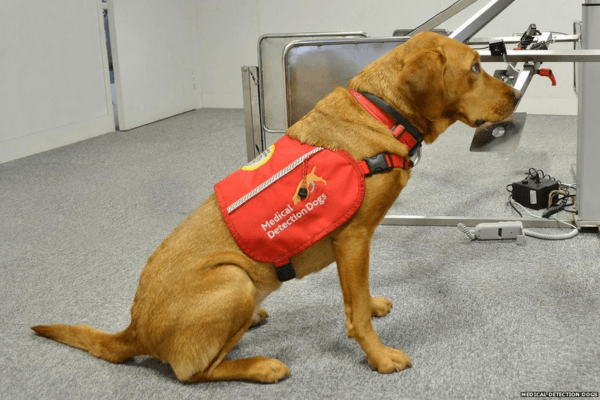
Canine scent discrimination relies on the remarkable sensitivity of a dog’s olfactory receptors, which are specialized for detecting specific odors. Dogs have approximately 220 million olfactory receptors, compared to humans who have around 5 million. These receptors enable dogs to detect even low concentrations of volatile organic compounds that may indicate the presence of cancer cells.
Furthermore, dogs have been trained to distinguish between different types of cancers based on their unique odor profiles. This ability highlights the potential for using canines as non-invasive diagnostic tools in early cancer detection, offering hope for improving patient outcomes through earlier intervention and treatment.
Canine Cancer Detection Studies and Success Stories
This discussion focuses on the research conducted to explore dogs’ ability to detect cancer.
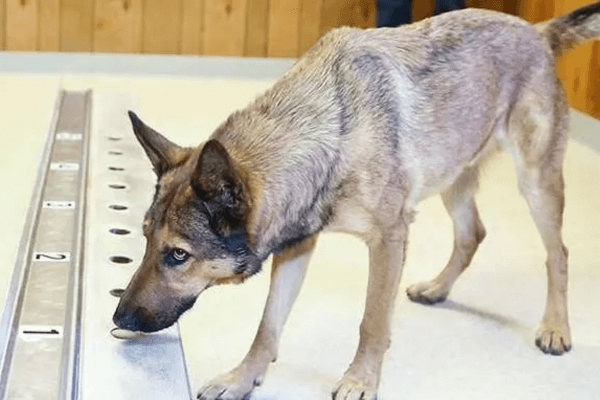
The studies aim to understand the accuracy and reliability of canines in detecting various types of cancers, including lung, breast, prostate, and ovarian cancers.
These real-life success stories highlight the potential of using dogs as a non-invasive and cost-effective method for early cancer detection.
Research on Dogs’ Ability to Detect Cancer
Research has revealed the extraordinary potential of dogs to detect cancer through their remarkable olfactory abilities, offering a glimmer of hope in the quest for innovative diagnostic tools.
Dogs possess an exceptional olfactory system that enables them to detect even the faintest scent of cancerous cells.
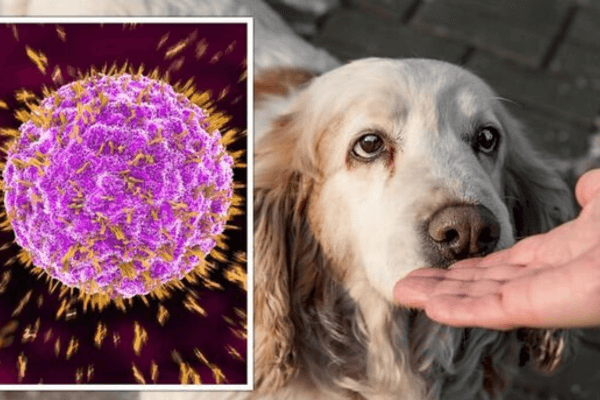
This ability is further enhanced by their training methods, which involve conditioning and positive reinforcement.
The results from numerous studies have been nothing short of astounding, with dogs consistently demonstrating high accuracy rates in detecting various types of cancer, including lung, breast, ovarian, and prostate cancers.
Their uncanny ability to sniff out cancer has not only sparked interest among scientists but has also provided immense hope to individuals who are battling this devastating disease.
These findings highlight the potential for dogs to serve as invaluable allies in early cancer detection and potentially save countless lives.
Real-Life Examples of Dogs Detecting Cancer
Real-life instances of canines successfully detecting signs of cancer serve as compelling evidence for the potential application of their olfactory abilities in early diagnostic methods. Dogs have demonstrated an impressive capability to detect various types of tumors, including lung, breast, ovarian, and bladder cancers.
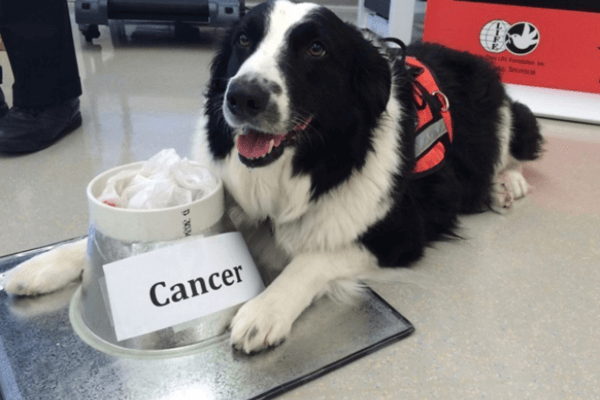
In a study conducted by researchers at the University of Pennsylvania, trained dogs were able to accurately identify urine samples from patients with bladder cancer with a success rate of 98%. This highlights the potential for using canines as non-invasive tools for cancer detection.
To achieve this level of accuracy, dogs undergo extensive training programs that involve scent discrimination and reward-based reinforcement. By honing their olfactory skills through such canine cancer detection training, these remarkable animals offer hope for improved early diagnosis and treatment outcomes in humans.
Potential Benefits of Using Dogs Smell Cancer Diagnostic Tools
One potential area where dogs have shown promise as diagnostic tools is in detecting the presence of cancer through their highly sensitive sense of smell. Dogs have been trained to detect various types of cancers, including lung, breast, and prostate with remarkable accuracy. This ability can provide several potential benefits in the field of cancer diagnosis:
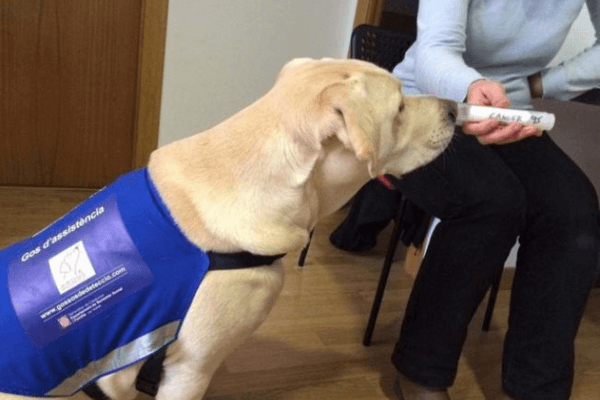
- Early detection: By using dogs as diagnostic tools, cancer may be detected at an early stage when treatment options are more effective.
- Non-invasive method: Unlike traditional diagnostic methods such as biopsies or imaging tests, dog sniffing is a non-invasive technique that does not require physical contact with patients.
- Cost-effective: Training dogs to detect cancers could potentially be a cost-effective alternative to expensive laboratory tests or imaging procedures.
- Emotional support: The presence of a dog during the diagnostic process can provide emotional support and comfort for patients.
However, there are also potential limitations and ethical considerations associated with using dogs as diagnostic tools. These include variations in individual dog performance, the need for standardized training protocols, and ensuring the well-being and ethical treatment of the animals involved in this process.
Challenges and Limitations of Canine Cancer Detection
A significant hurdle in utilizing canines for cancer detection lies in the need to establish standardized training protocols that can ensure consistent and reliable results.
Ethical considerations arise when using dogs as diagnostic tools, as their participation may be seen as exploitative. Ensuring the accuracy and reliability of canine cancer detection is crucial to address these concerns.

Training programs must focus on developing uniform methodologies that allow for consistent performance across different dogs and settings.
Additionally, it is essential to validate the effectiveness of canine cancer detection through rigorous scientific studies, ensuring that false positives or negatives are minimized.
The challenge lies in establishing a balance between ethical considerations and achieving high levels of accuracy and reliability in order to make canine cancer detection a viable option for routine medical practice.
Future Directions in Canine Cancers Detection Research
To further advance canine cancer detection research, future directions may involve exploring novel technologies and methodologies that can enhance the accuracy and reliability of diagnostic outcomes. These advancements could include the development of non-invasive imaging techniques such as molecular imaging or advanced radiology methods like positron emission tomography (PET) scans. Additionally, researchers may investigate the use of advanced genetic testing methods to identify specific biomarkers associated with different types of canine cancer.
Furthermore, ethical considerations in canine cancer detection research should be carefully addressed. It is important to ensure that any new techniques or methodologies used in this field prioritize the welfare and well-being of the animals involved. This includes minimizing stress and discomfort during diagnostic procedures, obtaining informed consent from dog owners for their participation in research studies, and maintaining strict confidentiality regarding any personal information obtained during these investigations.
Table: Novel Canine Cancer Detection Techniques
| Technique | Description |
|---|---|
| Molecular Imaging | Non-invasive imaging technique that uses targeted probes to visualize specific molecules within the body |
| Advanced Radiology Methods | High-resolution imaging techniques like PET scans that provide detailed anatomical and functional information |
| Genetic Testing | Utilizing advanced genetic testing methods to identify specific biomarkers associated with different types of cancer |
By exploring these novel techniques while addressing ethical considerations, future research efforts have the potential to significantly improve early detection rates and treatment outcomes for canine cancer patients.
If you can’t find the right dog for you to adopt locally, please consider adopting a dog from Bone Voyage Dog Rescue. We’ll fly with your dog to you.
See Also:
- Dog Needs Exercise Buddies: Improve Your Dogs Mental and Physical Health
- Top 15 Breeds For Therapy Dogs: Boosting Mental Health
- A Guide to Healthy Skin: Managing Dryness in Dogs
Conclusion
Numerous studies and real-life examples have provided compelling evidence that dogs possess an extraordinary ability to detect various types of cancer through their acute sense of smell. Their exceptional olfactory capabilities, combined with their unique training and bond with humans, offer the potential for a non-invasive and cost-effective method of early cancer detection. While further research is needed to fully understand the mechanics behind this phenomenon and to standardize the training protocols, the promising results achieved thus far indicate that dogs’ ability to smell cancer holds tremendous promise in the field of medical diagnostics.
Frequently Asked Questions
How do dogs detect cancer using their sense of smell?
Dogs detect cancer using their exceptional canine olfactory abilities. By harnessing their powerful sense of smell, dogs can identify specific volatile organic compounds emitted by cancer cells, enabling early detection and potential lives saved.
Are there specific types of cancer that dogs are more successful at detecting?
Dogs have shown varying success in detecting specific types of cancer, such as lung, breast, and ovarian cancer. However, the specificity of their detection is limited due to factors like variations in training methods and individual dog abilities.
Can dogs detect cancer in its early stages?
Dogs have shown potential in detecting various diseases, but their ability to detect cancer in its early stages is limited. While they can be trained to identify specific odors, there are challenges such as false positives and the need for further research and validation.
What are the potential risks or drawbacks of using dogs as diagnostic tools for cancer detection?
Potential risks and drawbacks of using dogs as diagnostic tools for cancer detection include the need for rigorous training, potential inaccuracies or false positives/negatives, limited availability, cost implications, and ethical considerations regarding the use of animals in medical diagnostics.
Are there any other medical conditions or diseases that dogs have been trained to detect using their sense of smell?
Dogs have been trained to detect various medical conditions using their sense of smell, including diabetes detection and COVID-19 screening. Their remarkable olfactory abilities make them valuable tools in assisting with early detection and diagnosis of these diseases.
